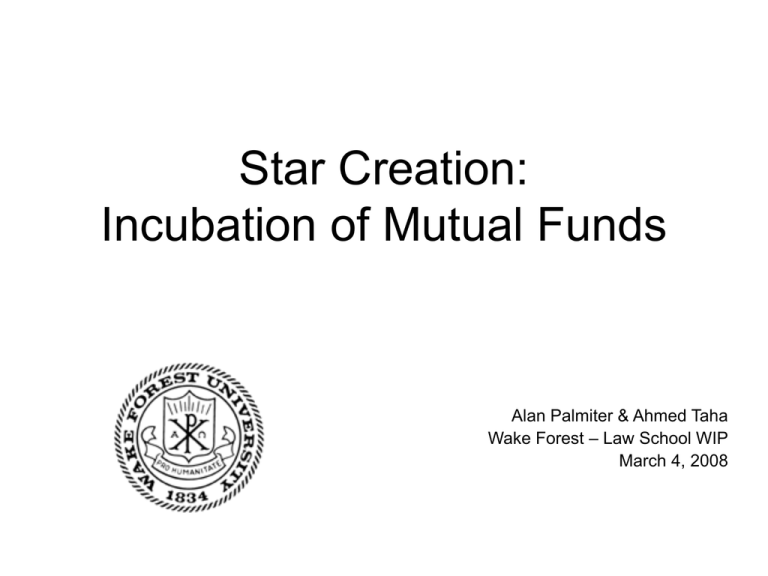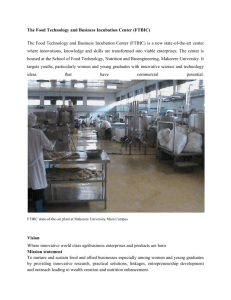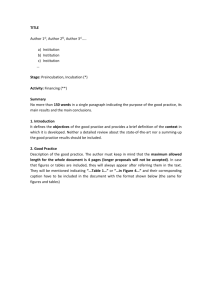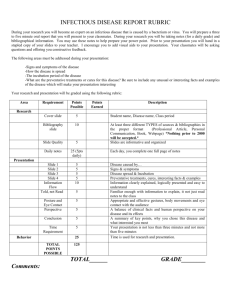Star Creation: Incubation of Mutual Funds Alan Palmiter & Ahmed Taha
advertisement

Star Creation: Incubation of Mutual Funds Alan Palmiter & Ahmed Taha Wake Forest – Law School WIP March 4, 2008 US mutual fund market Mutual Fund Ownership - US stocks 30% 25% 20% 15% 10% 5% 0% 1950 1960 1970 1980 1990 2000 2005 Source: Bogle / Federal Reserve Flow of Funds Accounts Market Overview Number of mutual funds? Total assets? – % U.S. stocks/bonds? – % retirement savings? Composition? Number of households? Household demographics? – Median income? – Median financial assets? • Knowledge of basic characteristics – Asset class? – Fund risk? – Fund expenses? • Persistence of past returns – Morningstar ***** – Asset classes? How to create stars? Closing out Merger Incubation Selection Incubation (how they do it) Parable of the “market beating” broker 10,000 letters 5,000 letters 2,500 letters 1,250 letters 625 letters Parable of the “market beating” broker 10,000 letters 5,000 letters 2,500 letters 1,250 letters 625 letters Stock picking ability • Apparent: 97% • Actual: 50% Incubation (how do you know?) Create Close Register Deregister CUSIP assigned Report M-star Sell to public Finance studies Arteaga, Ciccotello & Grant (1998) • Funds less than 1-yr-old in MF database, compared to funds with more than 1-yr-old in database • New funds > established funds (about 5% for late 90s) • But in 2nd year, “best” new funds not statistically > established funds Wisen & Chiang (2006) • Funds with less than 9 months of existence, compared to seasoned funds with more than 12 months experience • New funds > seasoned funds (3-8% better, depending on category) Evans (2007) • Funds with more than 1-year lag between creation and public sale • Incubation returns > never-incubated public returns (15% better!! And 2-5% on risk-adjusted basis) • But incubated funds < never-incubated funds (- 3.5% nominal after 3 years / nothing on risk-adjusted basis) Ackerman & Loughran (2007) • Funds entering MStar with 6-month+ prior returns • Incubation returns > market returns (3.6% better than stock market) Findings (1) “New” funds outperform “old” funds, but outperformance does not continue – Evidence of incubation – Some new “loser” funds never survived (2) Reasons “new” funds outperform “old” funds – Fund families allocate “hot” IPO’s to “new” funds – Families underallocate expenses to “new” funds – Selection bias: strong performers more likely to be taken public SEC approach > Hot IPOs > Underallocate expenses > Selection bias Hot IPO’s (Van Kampen Growth Fund proceeding): • “Overcooked” new fund – Reported and advertised 62% annual return – Didn’t disclose that 1/3 of return was from hot IPO’s – Once public Fund grew from ~$300K to $100 million • Sanction: – Fined “for failing to disclose material facts concerning the impact of hot IPO’s on their ‘incubator’ Growth Fund's 1996 performance.” Underallocation of Expenses: ???? Selection bias • MassMutual: SEC allows new mutual fund to use record of separate investment account converted into mutual fund – if mutual fund not created for track record • Response to Prof. Greene’s Hypothetical: SEC says can’t use multiple similar funds to create a performance track record • ITT Hartford: SEC allows performance of similarly managed insurance funds’ in advertisements for new public funds. ITT Hartford: The fund must “prominently disclose that the Insurance Fund’s performance is not the Public Fund’s own performance, and should not be considered indicative of the past or future performance of the public fund.” Solutions? #1 - More disclosure Examples – Must disclose # of funds not taken public – Explanatory Warning: “Because fund companies often take public only funds that perform well in the past, high past performance of a particular fund should not be taken as evidence of managerial skill.” Problems – Must disclose all private accounts? – Will investors understand? – Will investors care? #2: No reporting of non-public returns Advantages – Doesn’t rely on investors – Eliminates incentive to favor incubation funds Problems – Puts new funds at competitive disadvantage: Investors want the information – Circumvention: “Public Incubation” #3: Treat “incubation” as deceptive practice Advantages – Relies on courts, rather than captured SEC – Places burden on brokers not to market “incubated” funds – Allows some flexibility, but prevents “new broker” game Problems – Courts not expert in number manipulations – May be hard to distinguish – how know whether fund is “incubated” The end







